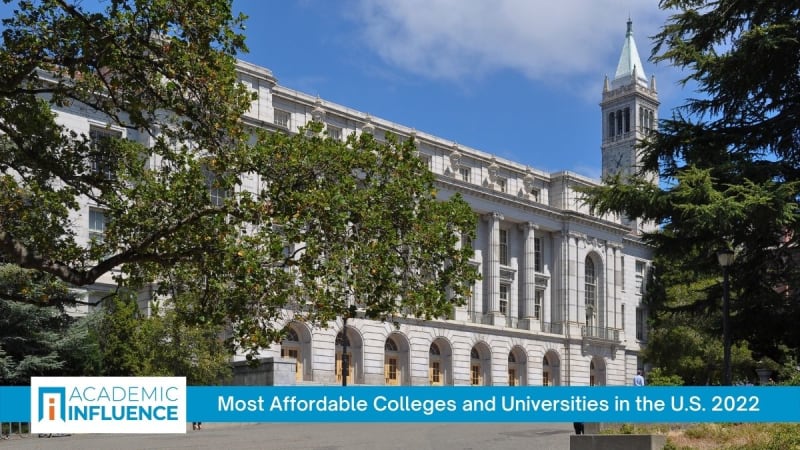Guide to Paying for College

Concerned with the how you’re going to pay for college? We have information, advice, and tips to simplify this complicated and stressful topic.
When it comes to the cost of college, the sticker price is only part of the story. Beyond tuition, you’ll be paying for housing, fees, food, text books, and more. But you may be able to factor in federal student aid and scholarships. In other words, paying for college can be complicated. Use our guides to simplify the process.
You can get started by taking a comprehensive dive into the real cost of college.
Or read on for our Guide to Paying For College, where you’ll find helpful tips, links and resources on everything from affordability to student loan repayment to the hidden college costs that aren’t listed on the sticker price!

Affordability
The overall cost of college is high and has risen steadily for decades. Business Insider notes that the average tuition for a public, four-year colleges was $10,740 for in-state residents and $27,560 for out-of-state residents during the 2021-2022 school year. Over the same period, the cost for a year of tuition and fees at a private non-profit university averaged $38,070.
With the constantly rising cost of college, affordability is a major factor for many students.
For ways to reduce the cost of your higher education, start with our Guide to Affordable Degrees.
You can also dive a little deeper in any of the following categories:
Most Affordable Degrees
Most Affordable Colleges
Most Affordable Online Colleges
You can also check out our:

Back to Top
Financial Aid
The U.S. Department of Education provides more than $120 billion in federal student aid every year to help students pay for college, graduate school, or career school. Most U.S. citizens planning to attend an accredited college, university, or vocational school are eligible for some form of federal financial aid. Learn more about need-based grants, federal student loans, state-based college loans, tuition reimbursement, and other specialized financial aid programs.
Every student applying to an accredited college or university should complete a FAFSA. The Free Application for Federal Student Aid is the critical first step in determining your eligibility for federal student loans or for need-based student grants. Need-based grants can reduce your cost of college and unlike student loans, these do not need to be repaid. Eligibility is determined based on economic need. Fill out your FAFSA to determine whether or not you qualify.
Types of Financial Aid
- Federal Student Loans: Students who do not qualify for need-based grants will likely receive an offer for one of several federal student loan packages. The following are the most common Federal Direct Loans, those loans which are funded by the federal government and processed through the Federal Office of Student Loans and can include Direct Subsidized Loans [also known as a Subsidized Stafford Loans or Federal Family Education Loans (FFEL)], Direct Unsubsidized Loan (also known as an Unsubsidized Stafford Loan), PLUS Loans, and Direct Consolidation Loan.
- State-Based Loans: In addition to the federal financial aid, you may also be eligible for state financial aid. Available loan, grant, and scholarship programs will vary from state to state, as will eligibility requirements.
- College-Based Financial Aid: A number of colleges provide both need-based and merit-based aid to eligible students. In particular, private and elite colleges will use a supplemental form-in addition to the FAFSA- to determine additional aid eligibility as funded directly through the college.
- Private Student Loans: For students and parents who require additional funding after federal loans have been exhausted, private education loans are an option. Unlike federal loans, there is no nationwide fixed interest rate. Your fixed interest rate will vary based on your personal credit history and the private lender who ultimately signs over your loan. Typically, these interest rates are higher than those available with federal loans.
- Need-Based Grants: While student loans must be repaid, need-based grants typically do not need to be repaid. However, most are also available only to those with demonstrated financial need.
After completing your FAFSA, find the online portal for financial aid in any states where you are considering attending college. Your eligibility from one state to the next may help shape your ultimate enrollment decision. Visit the National Association of Student Financial Aid Administrators (NASFAA) portal to find out about financial aid in your state.
The College Scholarship Service Profile (CSS Profile) form helps roughly 250 participating colleges and universities determine which students qualify for need-based financial aid based on their family’s ability to pay for colleges, and which students qualify for merit-based aid based on academic or athletic achievements.
The most commonly awarded federal need-based grants are:
For a comprehensive guide to financial aid including insights on specialized topics like private loans, federal loan forgiveness programs, and the wide range of options for managing your student loan payments, check out our complete Guide to Financial Aid in Higher Education.
Or, for a more focused discussion, check out any of the important financial aid topics below:
Getting Student Loans
Repaying Student Loans

Back to Top
Scholarships
Scholarships can be an amazing way to help pay for college. Scholarships come in all shapes, sizes, and sources.
From private scholarships to public grant programs, from school-based merit and athletic scholarships to awards from community groups or national corporations, there are countless ways to get free money for college costs. Some scholarships are designed to pay for certain qualified higher education expenses while others may pay for your entire college degree!
Scholarship Guides
The best way to maximize your opportunities is to apply for as many scholarships as you can. Read on to learn the difference between need-based grants and merit-based scholarships, get tips on improving your chances of earning a scholarship, and find out how to kick off your scholarship search whether you’re just looking for help with some college expenses or you’re hoping to land a full ride to pay for college.
Check out our:
You can also get a leg up on the competition with some help from a College Admissions Consultant. Jump to our Guide to College Admissions Consultants to see how a CAC could help you maximize scholarship opportunities.
Additional College Costs
Students will often pay far more for their college education than the initial sticker price. There are various additional college costs that you should be aware of as you begin pursuit of your bachelor’s degree.
Student Fees
Students may pay a wide range of fees in addition to the cost of their tuition bill. These fees may include:
- Orientation Fees: $50-$300
- Campus Fees: $1000+
- Lab Fees: $150
- Spirit/Athletic Fees: Varies
- Assorted Fees (i.e. technology, transportation, health & wellness, etc.): Varies
For more on these fees, exactly what you’ll be paying for, and how much it will likely cost you, check out our Guide to College Fees.
Housing Expenses
Room and board is likely the most significant cost that most students will pay beyond tuition and fees. For students who will live on-campus or who will rent off campus, housing is a major expense. This expense is often proportional to the relative cost of your college.
Colleges with high tuition will likely also offer costly on-campus housing options. Geography can also directly impact the cost of housing. Students seeking off-campus housing in small towns will likely pay far less for rent than those leasing off-campus space in major metropolitan cities.
Text Books
Another major expense is the cost of textbooks. According to College Board, the average college student will spend more than $1,200 on books and materials per year.
Education Materials
Beyond mandatory text books, most students will need to purchase any number of peripheral educational resources over the course of a year including laptops, tablets, ink cartridges, cloud storage, educational apps, and any incidental expenses that may arise in completion of a project. College Board reports that “in 2018-19, students spent an average of $415 on course materials, $419 on technology, and $108 on supplies.”
Cost of Living
In addition to the various items that you must pay for as a student, you still have to account for basic living expenses like travel, phone bills, toiletries, healthcare, medication, clothing, recreation, and more. If you live off campus and don’t partake of your school’s meal plan, you can also add in the cost of food.
The cost of living for each college student will vary considerably. Living expenses can be impacted by factors like location, housing, online course access, and personal circumstances. Consider your own needs—geographical, medical, dietary, recreational, etc.—in forecasting the budget you will likely require to satisfy your basic cost of living expenses.

Back to Top
Factors That Can Reduce the Cost of College
Now that you know which factors are likely to inflate the sticker price, we have good news. There are also a number of factors that can reduce the cost of college:
In-State Attendance
Tuition costs are often dramatically lower for students attending public school in-state. If lowering the cost of college is a major priority, consider attending a public school in close proximity to home. It’s also worth noting that online students attending local public schools can usually qualify for the lower in-state tuition rate.
For a closer look at in-state tuition, read our Focus on In-State Tuition Rates.
Online College
One of the most immediate ways to reduce costs affiliated with college attendance is to bypass the costs of on-campus housing, travel, campus fees and more by attending online college. Students attending online college will often pay similar tuition rates as their on-campus peers.
However, living at home and attending classes online can mitigate a number of the peripheral costs cited above such as housing, transportation and campus fees. You can maximize these savings with our Tips To Make Online College Cheaper.
Or learn more with a look at our Guide to Online Degrees.
Additional Insights on the Cost of College
Read on for a deeper understanding of key issues impacting students, especially the rising cost of college tuition and the growing student loan debt.
Jump to our College Admissions Guide for tips on hitting college application deadlines, submitting test scores, connecting with College Admissions Consultants, and much more.
Or get tips on studying, student life, and much more with a look at our Student Resources.





















